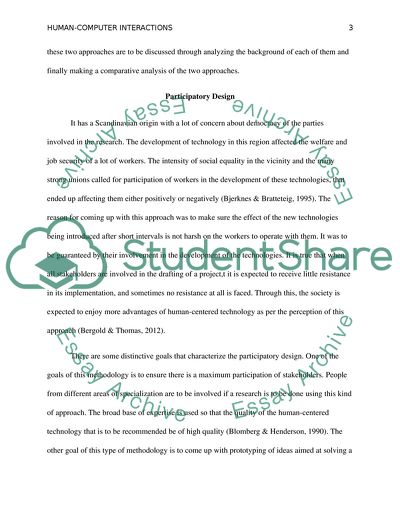Cite this document
(Human and Computer Interactions Essay Example | Topics and Well Written Essays - 2750 words, n.d.)
Human and Computer Interactions Essay Example | Topics and Well Written Essays - 2750 words. Retrieved from https://studentshare.org/technology/1871993-compare-and-contrast-participatory-design-and-action-research-as-approaches-to-the-design-of-human-centred-technology
Human and Computer Interactions Essay Example | Topics and Well Written Essays - 2750 words. Retrieved from https://studentshare.org/technology/1871993-compare-and-contrast-participatory-design-and-action-research-as-approaches-to-the-design-of-human-centred-technology
(Human and Computer Interactions Essay Example | Topics and Well Written Essays - 2750 Words)
Human and Computer Interactions Essay Example | Topics and Well Written Essays - 2750 Words. https://studentshare.org/technology/1871993-compare-and-contrast-participatory-design-and-action-research-as-approaches-to-the-design-of-human-centred-technology.
Human and Computer Interactions Essay Example | Topics and Well Written Essays - 2750 Words. https://studentshare.org/technology/1871993-compare-and-contrast-participatory-design-and-action-research-as-approaches-to-the-design-of-human-centred-technology.
“Human and Computer Interactions Essay Example | Topics and Well Written Essays - 2750 Words”, n.d. https://studentshare.org/technology/1871993-compare-and-contrast-participatory-design-and-action-research-as-approaches-to-the-design-of-human-centred-technology.


